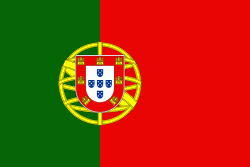Electricity Museum (Museu da Electricidade)
Tejo Power Station (the old Electricity Museum, in Portuguese Museu da Electricidade) is a cultural centre that presents the evolution of energy with a Museum of Science and Industrial Archaeology concept, where themed and experimental exhibits live side by side with a great variety of cultural events. Located in the Belém area on terrain Lisbon usurped from the Tagus river (Tejo in Portuguese) at the end of the 19th century, in one of the city's areas with the greatest concentration of historical monuments where one can find, among others, the Jerónimos Monastery, the Belém Cultural Centre, the Tower of Belém, the Padrão dos Descobrimentos, the Portuguese Presidential Palace and Museum, the Coach Museum or the Cordoaria Nacional (national rope factory). A building classified as a Public Interest Project, the Electricity Museum unfolds along the perimeter of the old thermoelectric plant – the Tejo Power Station, which illuminated the city of Lisbon for more than four decades.
It opened as a museum in 1990. Ten years later, the Electricity Museum's buildings and equipment underwent a period of rehabilitation, to reopen in 2006 fully renovated and with a new discourse and museum proposals.
Tejo Power Station (The old Electricity Museum) is a part of the heritage and structure of the EDP Foundation, which belongs to the EDP Group – Energias de Portugal, SA. In 2015 EDP announced that from 2016 the museum will form part of Museum of Art, Architecture and Technology.
The entire complex that makes up the Tejo Power Station constitutes an old thermoelectric plant that supplied power to Lisbon and its surrounding area. The building is unique amidst Lisbon's architectural setting, and is one of the most beautiful examples of Portuguese industrial architecture from the first half of the 20th century.
Tejo Power Station was built between 1908 and 1951, thereby undergoing several stages of expansion throughout this period. Its structure follows the western type of architecture of iron covered with brick, which shapes and decorates the facades in artistic styles that range from arte-nouveau, in its older sections (low-pressure building), to classicism in the more contemporary parts (high-pressure building). With the station's expansion, additional adjoining terrain and buildings were acquired over the years, becoming the great industrial complex it is today, with various cultural functions, always with the Tagus River, its namesake, in the backdrop.
Due to its state of conservation, the Museum underwent restoration work between 2001 and 2005 to consolidate its structure, renew its facades and interior machinery and, with a new museum project, transform it into what it is today.
In October 2015 EDP announced that London-based architectural practice AL A formed by Amanda Levete is designing a Kunsthalle sitting alongside the existing museum, to host a wide-ranging programme of exhibitions under the leadership of Pedro Gadahno. The new building was set to open in 2016 as MAAT - Museu de Arte, Arquitetura e Tecnologia.
It opened as a museum in 1990. Ten years later, the Electricity Museum's buildings and equipment underwent a period of rehabilitation, to reopen in 2006 fully renovated and with a new discourse and museum proposals.
Tejo Power Station (The old Electricity Museum) is a part of the heritage and structure of the EDP Foundation, which belongs to the EDP Group – Energias de Portugal, SA. In 2015 EDP announced that from 2016 the museum will form part of Museum of Art, Architecture and Technology.
The entire complex that makes up the Tejo Power Station constitutes an old thermoelectric plant that supplied power to Lisbon and its surrounding area. The building is unique amidst Lisbon's architectural setting, and is one of the most beautiful examples of Portuguese industrial architecture from the first half of the 20th century.
Tejo Power Station was built between 1908 and 1951, thereby undergoing several stages of expansion throughout this period. Its structure follows the western type of architecture of iron covered with brick, which shapes and decorates the facades in artistic styles that range from arte-nouveau, in its older sections (low-pressure building), to classicism in the more contemporary parts (high-pressure building). With the station's expansion, additional adjoining terrain and buildings were acquired over the years, becoming the great industrial complex it is today, with various cultural functions, always with the Tagus River, its namesake, in the backdrop.
Due to its state of conservation, the Museum underwent restoration work between 2001 and 2005 to consolidate its structure, renew its facades and interior machinery and, with a new museum project, transform it into what it is today.
In October 2015 EDP announced that London-based architectural practice AL A formed by Amanda Levete is designing a Kunsthalle sitting alongside the existing museum, to host a wide-ranging programme of exhibitions under the leadership of Pedro Gadahno. The new building was set to open in 2016 as MAAT - Museu de Arte, Arquitetura e Tecnologia.
Map - Electricity Museum (Museu da Electricidade)
Map
Country - Portugal
 |
 |
| Flag of Portugal | |
One of the oldest countries in Europe, its territory has been continuously settled, invaded and fought over since prehistoric times. The territory was first inhabited by pre-Roman and Celtic peoples who had contact with Phoenicians, ancient Greeks and Carthaginians. It was later ruled by the Romans, followed by the invasions of Germanic peoples and the Islamic invasion by the Moors, whose rule was eventually expelled during the Reconquista. Founded first as a county of the Kingdom of León in 868, gained its independence as the Kingdom of Portugal with the Treaty of Zamora in 1143.
Currency / Language
| ISO | Currency | Symbol | Significant figures |
|---|---|---|---|
| EUR | Euro | € | 2 |
| ISO | Language |
|---|---|
| PT | Portuguese language |















